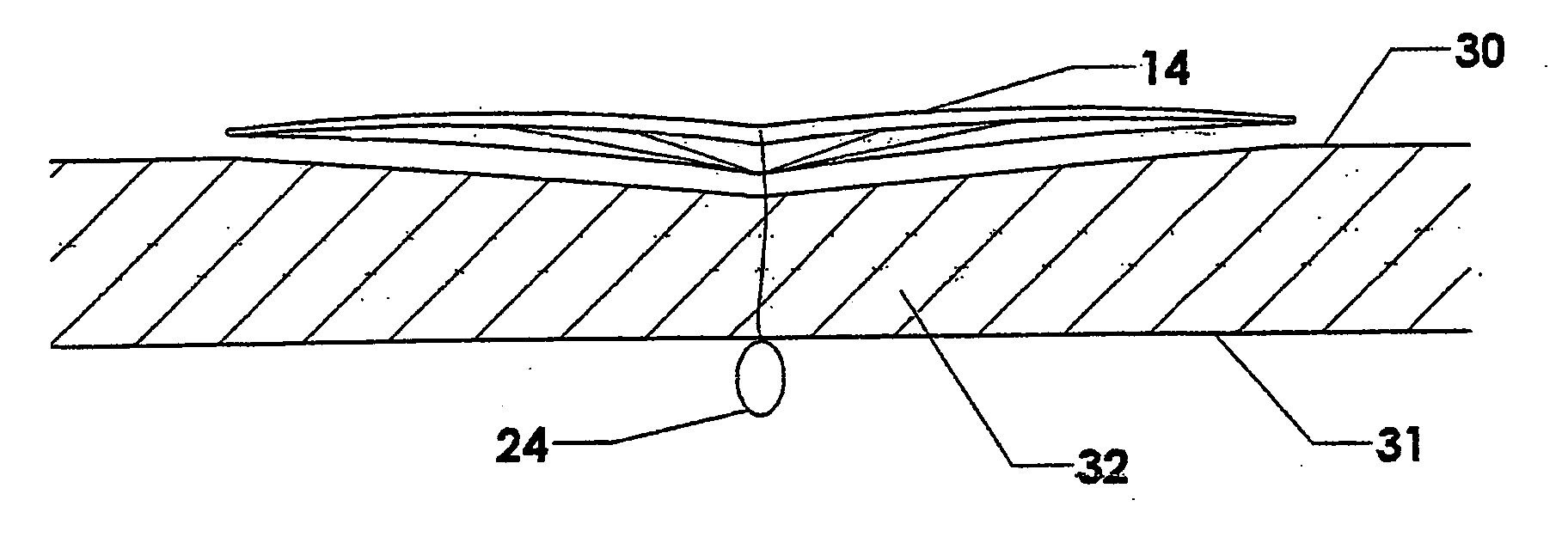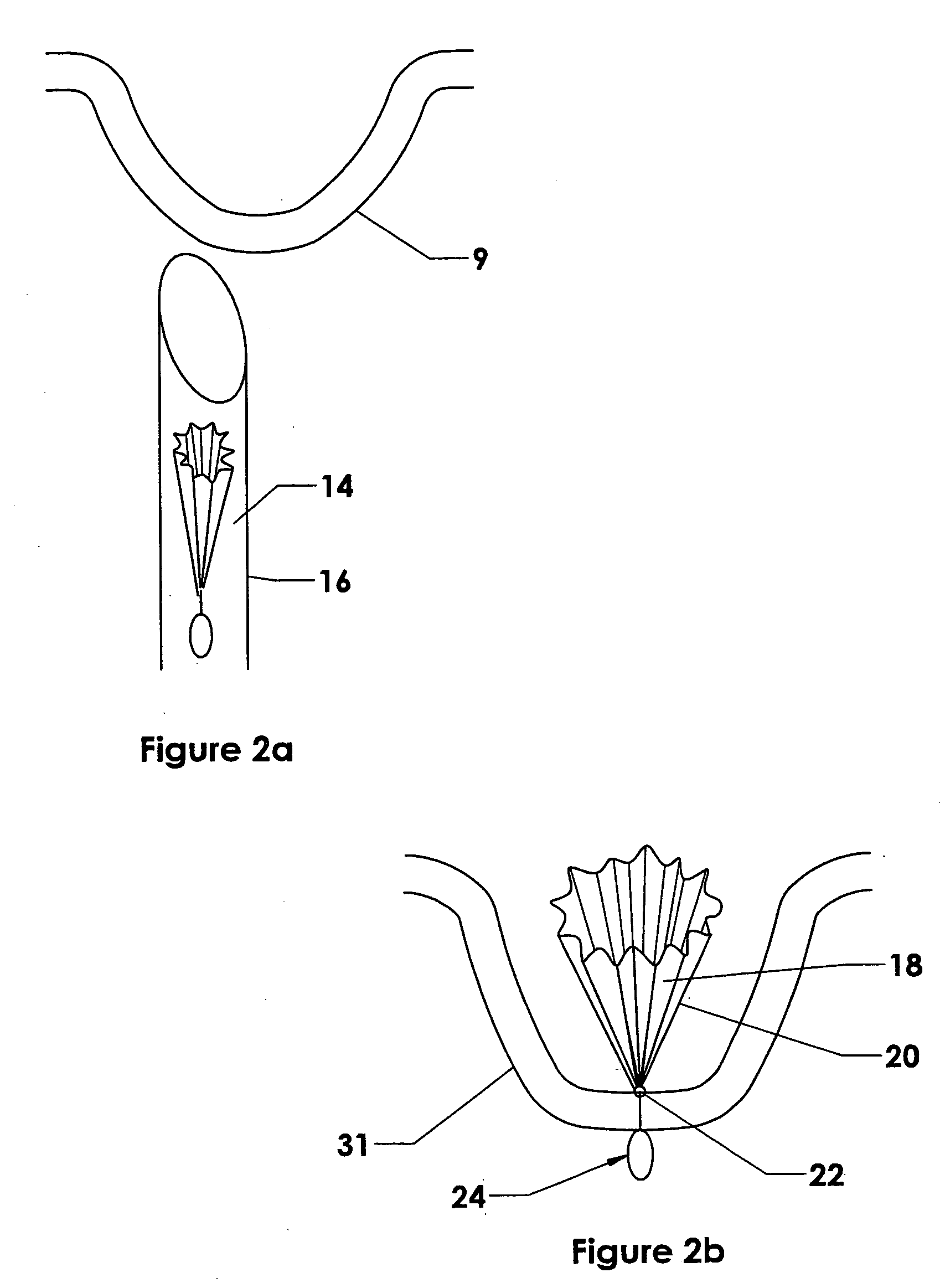Methods and devices for anchoring to soft tissue
- Summary
- Abstract
- Description
- Claims
- Application Information
AI Technical Summary
Benefits of technology
Problems solved by technology
Method used
Image
Examples
Embodiment Construction
[0064] As has been described, the attachment of fastening devices to soft tissue often depends on the penetration of soft tissue and placement of pledgets, mesh, umbrellas or other anchors on the outer wall of soft tissue. This can be dangerous because other important blood vessels, nerves or organs such as the liver, lungs, heart, gall bladder, kidneys, reproductive organs or other sensitive tissue often reside close to the point of placement, and the exact location of these sensitive structures is rarely known prior to intervention on the soft tissue by the physician. Many of the methods and devices described in this application can be placed with the use of a “safe harbor” delivery system that permits penetration of the soft tissue wall and placement of the anchor on the opposite side with less fear of damage to surrounding sensitive structures.
[0065] As shown in FIG. 1a, an endoscope 1 with a working channel 2, is employed that has a stabilizing element 4 attached to the distal...
PUM
 Login to View More
Login to View More Abstract
Description
Claims
Application Information
 Login to View More
Login to View More - R&D
- Intellectual Property
- Life Sciences
- Materials
- Tech Scout
- Unparalleled Data Quality
- Higher Quality Content
- 60% Fewer Hallucinations
Browse by: Latest US Patents, China's latest patents, Technical Efficacy Thesaurus, Application Domain, Technology Topic, Popular Technical Reports.
© 2025 PatSnap. All rights reserved.Legal|Privacy policy|Modern Slavery Act Transparency Statement|Sitemap|About US| Contact US: help@patsnap.com



